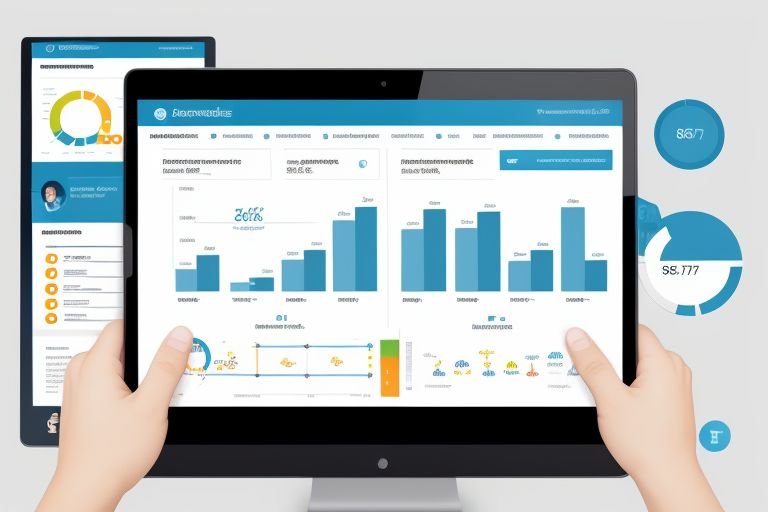Enhancing Educational Access For Underserved Communities: Strategies For Success

Educational Access For Underserved Communities is a powerful tool that opens doors to opportunity, yet millions of individuals from underserved communities still face significant barriers to access and quality learning. These communities, often marginalized by socioeconomic, geographic, and systemic factors, experience disproportionate challenges such as underfunded schools, limited resources, and lack of support services. Addressing these inequities requires a multifaceted approach that not only improves educational infrastructure but also fosters inclusive policies and community-driven initiatives. In this article, we will explore practical and effective strategies for enhancing educational access, empowering underserved populations, and fostering long-term success in education for all.
Key Takeaways:
- Community-Centered Solutions: Engaging with local communities to understand their unique challenges and needs is essential. Tailored educational programs that incorporate community input foster trust and increase the likelihood of success.
- Equitable Resource Allocation: Ensuring that underserved schools receive adequate funding, technology, and educational materials is critical. Investing in these resources can bridge the gap between marginalized and more privileged communities.
- Strengthening Teacher Support and Training: Providing teachers with specialized training to handle diverse student needs, along with ongoing support, equips them to better serve students in underserved areas and improve overall educational outcomes.
- Leveraging Technology for Distance Learning: Digital tools and online platforms can expand access to quality education, especially in rural or geographically isolated areas. Implementing affordable and accessible technology solutions can enhance learning opportunities.
- Policy Reform and Advocacy: Systemic changes at the policy level are necessary to address long-standing inequities. Advocating for policies that promote equal access to education, such as scholarship programs and inclusive curricula, can create a sustainable impact.
Tech-Driven Solutions for Educational Access in Rural Underserved Communities

Tech-Driven Solutions for Educational Access in Rural Underserved Communities explores innovative approaches to address the educational disparities faced by students in remote and resource-limited areas. In many rural communities, barriers such as inadequate infrastructure, lack of trained educators, and limited access to educational materials hinder the learning experience. This initiative highlights the importance of utilizing technology, such as online learning platforms and mobile applications, to provide students with quality educational resources. By enhancing internet connectivity and developing community-driven programs, these solutions aim to create a more inclusive and equitable educational environment that empowers students to learn at their own pace and access a wider range of learning opportunities.
Moreover, partnerships with non-governmental organizations (NGOs) and technology companies play a crucial role in implementing these tech-driven solutions. Collaborative efforts can lead to tailored programs that meet the unique needs of rural communities, such as providing localized educational content and training for educators and parents. By fostering digital literacy and promoting the effective use of technology in the classroom, these initiatives not only enhance the learning experience but also equip students with essential skills for the future. Ultimately, the goal is to bridge the educational gap, ensuring that every child, regardless of their geographical location, has access to quality education and the tools necessary for success.
- Digital Classrooms & E-Learning Platforms
Online education platforms like Khan Academy, Coursera, and edX provide remote learning opportunities, allowing students in rural areas to access world-class education. - Low-Cost Tablets and Laptops
Affordable hardware, such as low-cost tablets (e.g., Raspberry Pi-based devices) and refurbished laptops, provides students with the tools to engage in digital learning. - Mobile Learning Solutions
Mobile phones, which have a high penetration rate even in rural areas, enable access to learning materials and apps, making education more accessible on the go. - Internet Connectivity Initiatives
Efforts like satellite internet, Wi-Fi hotspots, and community internet centers aim to overcome the lack of broadband access, connecting rural areas to online education. - Offline Learning Tools
Platforms like Kolibri provide offline access to digital content, making it possible for students to continue learning even without continuous internet access. - Radio and TV-based Educational Programs
In some regions, radio and television remain powerful tools for delivering educational content, especially where internet connectivity is still limited.
Community-Based Programs Enhancing Educational Access in Urban Underserved Communities
Community-Based Programs Enhancing Educational Access in Urban Underserved Communities focus on grassroots initiatives designed to address the multifaceted barriers to education faced by students in urban areas with limited resources. Many urban underserved communities struggle with issues such as poverty, overcrowded schools, and a lack of support services, which can hinder students’ academic success. Community-based programs leverage local resources, including libraries, community centers, and nonprofit organizations, to provide supplemental educational support, mentoring, and after-school programs. By engaging families and community members, these initiatives foster a supportive learning environment that encourages student participation and retention.
These programs often emphasize collaboration among various stakeholders, including schools, local businesses, and community organizations, to create holistic educational experiences. For instance, partnerships can lead to the establishment of tutoring programs, workshops, and vocational training that align with the interests and needs of students. Additionally, by addressing social and emotional learning alongside academic achievement, community-based initiatives can help build resilience and promote a sense of belonging among students. Ultimately, these programs aim to empower urban underserved youth, ensuring they have equitable access to education and the opportunity to thrive both academically and personally.
- After-School Enrichment Programs
Local organizations provide safe, supervised environments for students to receive additional academic support, participate in STEM activities, and develop social skills. - Mentorship and Tutoring Initiatives
Volunteer-driven mentorship and tutoring programs connect students with academic and career role models who provide personalized guidance and motivation. - Community Learning Hubs
Libraries, community centers, and faith-based organizations offer spaces where students can access educational resources, free Wi-Fi, and study areas in environments conducive to learning. - Parental Engagement Programs
Community programs that involve parents in their children’s education, providing workshops, resources, and support to help them become more engaged in their child’s learning journey. - Youth Employment and Internship Opportunities
Programs that offer job training, internships, and apprenticeships provide students with hands-on experience and pathways to employment in industries like technology, healthcare, and the arts. - Local Scholarship Funds and Grant Programs
Community organizations raise funds to offer scholarships, reducing financial barriers for students pursuing higher education or vocational training.
The Role of Teachers and Mentors in Expanding Educational Access for Marginalized Students

The Role of Teachers and Mentors in Expanding Educational Access for Marginalized Students emphasizes the critical impact that dedicated educators and mentors have in fostering equitable learning environments for students from marginalized backgrounds. These individuals often serve as advocates, providing not only academic support but also emotional guidance and encouragement. By recognizing the unique challenges faced by marginalized students—such as systemic barriers, economic hardships, and cultural differences—teachers and mentors can tailor their approaches to meet the specific needs of each student. This personalized attention helps to build trust and rapport, which are essential for fostering a positive learning atmosphere where students feel valued and understood.
Moreover, the influence of teachers and mentors extends beyond the classroom. They play a pivotal role in connecting students with resources, opportunities, and networks that can facilitate their educational journeys. By fostering partnerships with community organizations, schools can create mentorship programs that provide students with role models who share similar backgrounds or experiences. These mentors can guide students through academic challenges, college applications, and career exploration, helping them envision and pursue futures that may seem out of reach. Ultimately, the dedication of teachers and mentors is vital in dismantling barriers to education and empowering marginalized students to achieve their full potential.
- Personalized Instruction and Support
Teachers and mentors offer individualized attention to students, adapting teaching methods to cater to diverse learning needs and overcoming barriers like language, disability, or socio-economic status. - Creating Safe and Inclusive Learning Environments
Teachers foster classrooms where all students feel respected and included, regardless of their background, promoting equity in education through culturally responsive teaching. - Encouraging Academic Persistence
By setting high expectations and providing consistent encouragement, mentors and teachers motivate marginalized students to stay engaged in their education and pursue long-term academic goals. - Providing Role Models and Inspiration
Mentors and teachers from similar backgrounds can serve as powerful role models, showing marginalized students that success is possible, and guiding them through both academic and personal challenges. - Connecting Students to Resources
Teachers and mentors help students access educational resources such as tutoring, technology, scholarships, and extracurricular activities, which may otherwise be unavailable to them. - Advocating for Students’ Needs
Teachers act as advocates for marginalized students, addressing issues such as discrimination, lack of resources, and systemic barriers within the educational system.
Government Policies and Funding for Enhancing Educational Access in Underserved Communities
Government Policies and Funding for Enhancing Educational Access in Underserved Communities focuses on the crucial role that public policy and financial investment play in addressing educational disparities faced by students in underserved areas. Government initiatives, such as increased funding for public schools, targeted grants for low-income districts, and programs aimed at improving infrastructure, are essential for creating equitable educational opportunities. Policies that prioritize resource allocation to underserved communities can help ensure that schools are equipped with the necessary tools, technology, and personnel to provide quality education. Moreover, legislation that supports initiatives such as free school meals, after-school programs, and early childhood education can further mitigate barriers that low-income families encounter.
In addition to direct funding, government policies can promote collaboration among various stakeholders, including schools, community organizations, and businesses. For instance, policies encouraging public-private partnerships can lead to innovative solutions that enhance educational access and support student success. Additionally, policies aimed at addressing systemic issues, such as housing instability and health care access, contribute to creating a more conducive learning environment for students. By implementing comprehensive policies that focus on the unique challenges faced by underserved communities, governments can play a transformative role in ensuring that all students have access to high-quality education and the resources they need to thrive.
- Increased Funding for Schools in Low-Income Areas
Governments allocate additional funding to schools in economically disadvantaged communities to improve infrastructure, provide up-to-date learning materials, and hire more qualified teachers. - Title I Programs
In the U.S., Title I programs provide federal funding to schools with a high percentage of students from low-income families, supporting programs designed to improve academic achievement. - Early Childhood Education Initiatives
Policies that promote universal access to preschool and early childhood education, such as Head Start, help provide a strong educational foundation for children from underserved communities. - Teacher Training and Incentive Programs
Government-funded training programs and financial incentives encourage highly qualified teachers to work in underserved schools, addressing teacher shortages and improving educational quality. - Technology Grants and Digital Equity Initiatives
Governments provide grants to schools for purchasing technology, enhancing internet access, and developing digital literacy programs to close the digital divide in underserved communities. - School Nutrition and Health Programs
Funding for free or reduced-cost meal programs ensures that students from low-income households receive proper nutrition, which is essential for their ability to learn effectively.
Partnerships Between Businesses and Schools to Enhance Educational Access for Underserved Communities

Partnerships Between Businesses and Schools to Enhance Educational Access for Underserved Communities highlight the powerful collaboration that can occur when private sector resources and expertise align with educational institutions to address inequities in learning environments. By partnering with schools in underserved areas, businesses can provide critical support through funding, internships, and mentorship programs, creating opportunities for students that might otherwise be unavailable. These partnerships can facilitate access to modern technology, resources for extracurricular activities, and exposure to real-world experiences that enrich the educational landscape. Moreover, local businesses can help schools develop curricula that align with industry needs, ensuring that students acquire relevant skills for future employment.
Additionally, these collaborations foster a sense of community investment in education, encouraging employees from partnering businesses to volunteer their time and expertise in schools. Through initiatives such as career days, workshops, and skill-building programs, students gain valuable insights into various professions and pathways. By promoting networking opportunities between students and local professionals, these partnerships not only enhance educational access but also empower students to envision and pursue futures in diverse fields. Ultimately, the synergy created through business-school partnerships serves to bridge the gap between education and the workforce, ensuring that underserved students receive the support and resources necessary to thrive academically and professionally.
- Resource Provision: Businesses can contribute financial support, technology, and educational materials, helping to fill the gaps in resources that many underserved schools face. This support is crucial in creating a more equitable learning environment.
- Mentorship and Career Development: By connecting students with professionals through mentorship programs and internships, businesses expose students to various career paths. This not only motivates students but also equips them with real-world experiences that enhance their education.
- Scholarship Opportunities: Many companies offer scholarships and grants, easing the financial burdens that can limit students’ access to higher education. This financial assistance can make a significant difference in students’ academic journeys.
- STEM Education Focus: Partnerships often emphasize STEM (Science, Technology, Engineering, and Mathematics) education, providing students with access to relevant skills and knowledge in high-demand fields. This focus helps prepare students for future careers in technology and innovation.
- Teacher Support and Training: Businesses can assist in professional development for teachers, ensuring they have the tools and training necessary to provide quality education. This support can lead to enhanced teaching practices and better student outcomes.
- Real-World Learning Opportunities: Collaborations can lead to the integration of real-world problems into the curriculum, allowing students to apply their learning in practical contexts. This approach fosters critical thinking and problem-solving skills.
Also Read: Educational Inequality: Unveiling the Barriers to Equal Opportunity
Conclusion
Enhancing educational access for underserved communities is a multifaceted challenge that requires a collaborative and strategic approach. The implementation of targeted strategies—such as fostering partnerships between schools and businesses, increasing funding for resources, and promoting inclusive curricula—can significantly improve educational outcomes.
By leveraging community engagement and providing essential support services, we can create an environment where all students have the opportunity to succeed. It is vital to prioritize investments in technology, teacher training, and mentorship programs that equip students with the skills and knowledge necessary for their futures.
FAQs
Q. What are the primary barriers to educational access for underserved communities?
A. Common barriers include financial constraints, lack of transportation, inadequate school resources, limited access to technology, and systemic inequalities in education.
Q. How can technology improve educational access in underserved communities?
A. Technology can provide online learning opportunities, access to educational resources, virtual tutoring, and communication tools that connect students with educators, helping to overcome geographical and resource limitations.
Q. What role do community organizations play in enhancing educational access?
A. Community organizations often provide tutoring, mentorship, after-school programs, and resources for families, acting as vital support systems to fill gaps in formal education and promote lifelong learning.
Q. How can policymakers effectively support educational access for underserved communities?
A. Policymakers can implement targeted funding, support innovative educational programs, create partnerships with community organizations, and ensure equitable distribution of resources to address disparities.
Q. What strategies can schools adopt to better serve underserved students?
A. Schools can adopt strategies such as culturally relevant pedagogy, individualized support programs, community engagement initiatives, and collaboration with local businesses to enhance educational access and foster a supportive learning environment.




